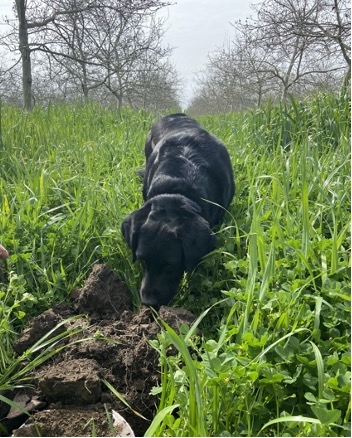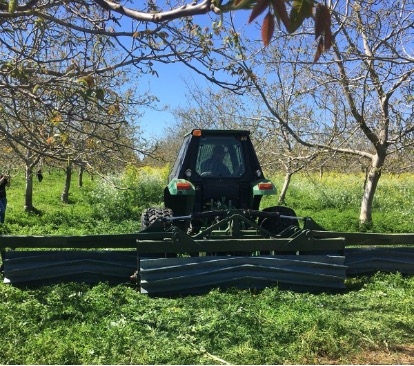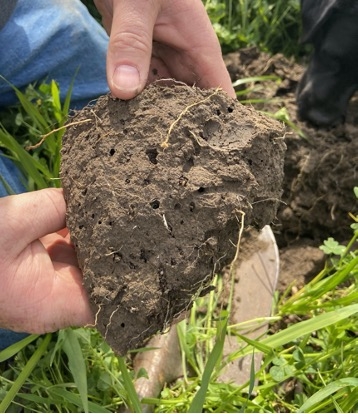
Daniel Unruh, and his family, farm just under 200 acres of walnuts alongside the Sacramento River, just outside of Princeton, CA. The walnut orchard is irrigated with solid set sprinklers and is only irrigated when needed, or if there is not enough rain during the season. Daniel started cover cropping in 2013 with the main goal of nematode suppression, and soon after, he and his wife took over the orchard operations. The cover crops that show up now between rows is voluntary, as he has not spread seed in years, but still sees a successful cover. He also practices reduced till on his farm to encourage the cover crop growth and help increase biomass production.
Daniel has not received money from any grants, or other outside funding sources to establish cover crops, this was just something he saw benefit in after the first few years of nematode reduction. His passion for cover cropping has grown to encompass more than just nematode suppression however, and he is now seeing plenty of benefits elsewhere around his orchard.
Beneficials of all kinds consider his orchard a home, less water is running off of his property during storms and irrigation, and he has cut his input and commercial fertilizer bill down by close to 75%. The soil organic matter for his orchard has also increased from around 1.7-1.9% to 3.0% when tested in 2020. When Daniel and his wife first took over in 2014, the orchard was sprayed for husk fly, coddling moth and blight, but now only blight has been addressed in recent years. In fact, he has not used any fertilizer at all the past few years, but has seen a slight reduction in yield as a result. Daniel also has seen changes in his irrigation cycle in what used to be a rotation of every 7-10 days, has been extended to every 12-14 days due to moisture retention.

Like many other farmers, his main concerns with cover cropping in an orchard system was termination, and the learning curve that comes along with it. Daniel was even able to design a roller crimper, with chevron crimps, specifically for his operation and the type of cover crops he uses for termination. His cover crop stand consists of brassicas, grasses and legumes and can easily grow to over 6 feet tall. When he originally planted, Daniel spread seed 17 feet across for almost 90% coverage. His roller crimper helps lay plant material down to protect the soil from the sun, improve water retention and creates an environment beneficial to microorganisms.

Daniel is so passionate about improving his soil microbiology and reducing his inputs, he even serves as a Mentor Farmer at the Chico State Center for Regenerative Agriculture. Daniel has presented at numerous events and has hosted workshops at his orchard to educate and encourage other growers to give soil management practices a try. Daniel says he is never done learning, and attends many workshops throughout the year as well.
Finally, Daniel encourages a holistic outlook, and motivates others to keep trying various approaches if it doesn't work the first time until you find a system that does work for your operation. He goes on to say you should try alternatives first before going straight to spraying fertilizer as eventually plants will rely on this synthetic ‘health' and it will not last.More on Daniel and how he has contributed to this research can be found at https://www.csuchico.edu/regenerativeagriculture/demos/daniel-unruh.shtml